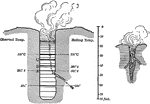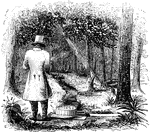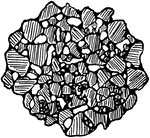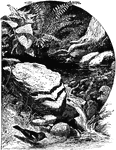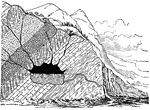Springs
The Springs Clipart gallery includes 24 examples of water rising to the surface of the earth from an underground source. The Springs gallery also includes mineral springs, artesian wells, hot springs, and geysers.
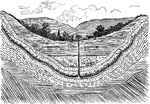
Artesian Well
Artesian Wells differ from ordinary wells in that their waters are discharged by natural pressures on…

Artesian Well
A boring in the ground through which currents of water rise from various depths toward or above the…

Artesian Well Conditions
"Diagrams illustrating the conditions favorable for artesian wells. In A, the porous bed a is in the…

Artesian Wells
An artesian well is a confined aquifer whose water is pressurized. Water will thus flow out of an artesian…

Phenomena of Wells and Springs in Drift Material
Drift material, loose material left on the surface by a retiring glacier, plays a part in wells and…
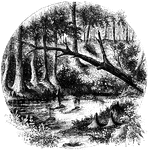
Eutaw Spring
"Eutaw Spring, where there was a conflict during the American Revolution."—Lossing, 1851
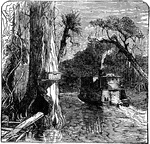
Silver Springs, Florida
Silver Springs is a clear basin within the St. Johns River in Florida. It is famed for its depth and…
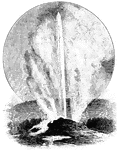
Geyser in Eruption
Geysers are boiling springs which, at intervals more or less regular, shoot out huge columns of water…

Giant Geyser of the Yellowstone
Giant Geyser of the Yellowstone. The eruptions of this geyser occur at intervals of 7 to 12 days, and…
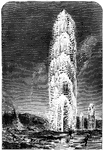
Giantess Geyser, Yellowstone Park
A geyser is a hot spring characterized by intermittent discharge of water ejected turbulently and accomplished…
Gravel Hill
"Suppose a to be a gravel hill, and b a strata of clay or rock, impervious to water. The fluid percolating…

Intermitting Spring
"A mountain and spring, showing how the principle of the syphon operates to produce the effect described.…
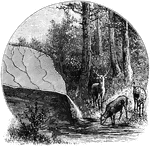
Origin of Springs
A spring is a point where groundwater flows from the ground, and is thus where the aquifer surface meets…
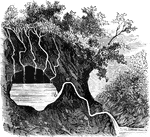
Periodical Spring
When the outlet tube of the reservoir is siphon-shaped, the discharge of the spring becomes periodical.…
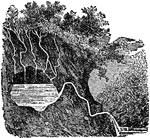
Spring
A flow of water from the interior of the earth, caused by the water resulting from rain or snow.
Springs
Two cases of springs: "In one, the water descends through the porous bed e to the layer d, which is…
Deep-Seated Springs
"Deep-seated Springs (s, s') rising through joints at a fault (f)." -Geikie, 1893
Simple Springs
Simple or surface springs: (d) stratum, (e) clay, (c) pervious bed, (a) strata, (b) valley.

Underground Waters
The image shows different layers of clay, gravel, and sand and how underground waters travel through.…
